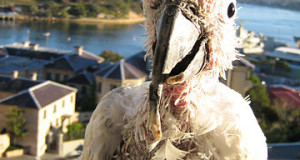Have you ever wondered, upon hearing a pet canary or wild mockingbird sing, just how it is that birds acquire such complex abilities – are they born songsters, or must they learn? Well, scientists at the Massachusetts Institute of Technology (MIT) have, and the zebra finch has provided some answers. In doing so, this species, long used in human neuroscience and other health related research (so much so that is often termed the “mouse of the avian world”), has also shed some light on speech development in humans.
The Role of the Brain
Although birds are linked in our minds, to song, only a very small percentage of the world’s 10,000+ species – those classified within the suborder Oscines – actually sing (and the voices of some of these, such as the crow, stretch the definition of “song”!). Baby zebra finches, much like human babies, babble on with an infinite variety of noises – practicing until they eventually learn the adult song. Once learned, the song is never varied.
Research completed last month (May, 2008) at MIT has revealed that two distinct brain pathways are involved – one for learning the song, the other for producing (singing) what has been learned. Damage to the learning pathway of a young finch prevents it from ever producing the adult song, but the same damage during adulthood has no effect on the bird’s singing abilities.
Bird Song and Human Speech
The MIT researchers have drawn some parallels to human learning abilities that bear further investigation. In zebra finches, the youngster’s vocal explorations cease once the adult song has been acquired, as the song never changes. However, the learning pathway is retained, possibly as a back-up system – damage to the song-producing pathway of an adult causes the bird to revert to sounds produced during the learning phase. We humans rely greatly on learning abilities, or pathways, throughout our lives, yet certain aspects of speaking, such as our ability to learn a language without an accent, must occur during childhood. So perhaps we also utilize, at least to some extent, two separate brain pathways when learning and producing sound.
Instinct and Mimicry
In all birds there seems to be an instinctive “song framework” that is filled in by learning and mimicry – male birds raised in isolation develop only incomplete songs that are not recognized by others of their species. The specifics of how the various popular pet birds learn their songs vary from species to species. Baby zebra finches pay attention only to the song of the male that actually feeds them. For example, zebra finches incubated (in captivity) by Bengalese finches grow up to sing the song of their foster parents – this despite the fact that the nestlings could hear other zebra finches singing nearby! How they know which song to choose among the many they hear is not yet understood.
The pet birds most valued for their singing abilities, such as canaries and shama thrushes, copy a wide variety of songs, not only those typical of their species. Indeed, owners of these birds can improve their pets’ vocal repertoires by exposing them to “tutor birds” of the same or different species. A favorite story among canary fanciers is that of a canary which learned to whistle the melody to “God Save the King” by listening to a trained bullfinch do the same in an adjoining room……if the bullfinch hesitated too long while singing, the canary would jump in and finish the melody at exactly the right point!
 That Bird Blog – Bird Care and History for Pet Birds
That Bird Blog – Bird Care and History for Pet Birds





One comment
Pingback: The Role of Learning and Instinct in Bird Song – lessons from the Zebra Finch, Taeniopygia guttata - Part 2 : That Avian Blog